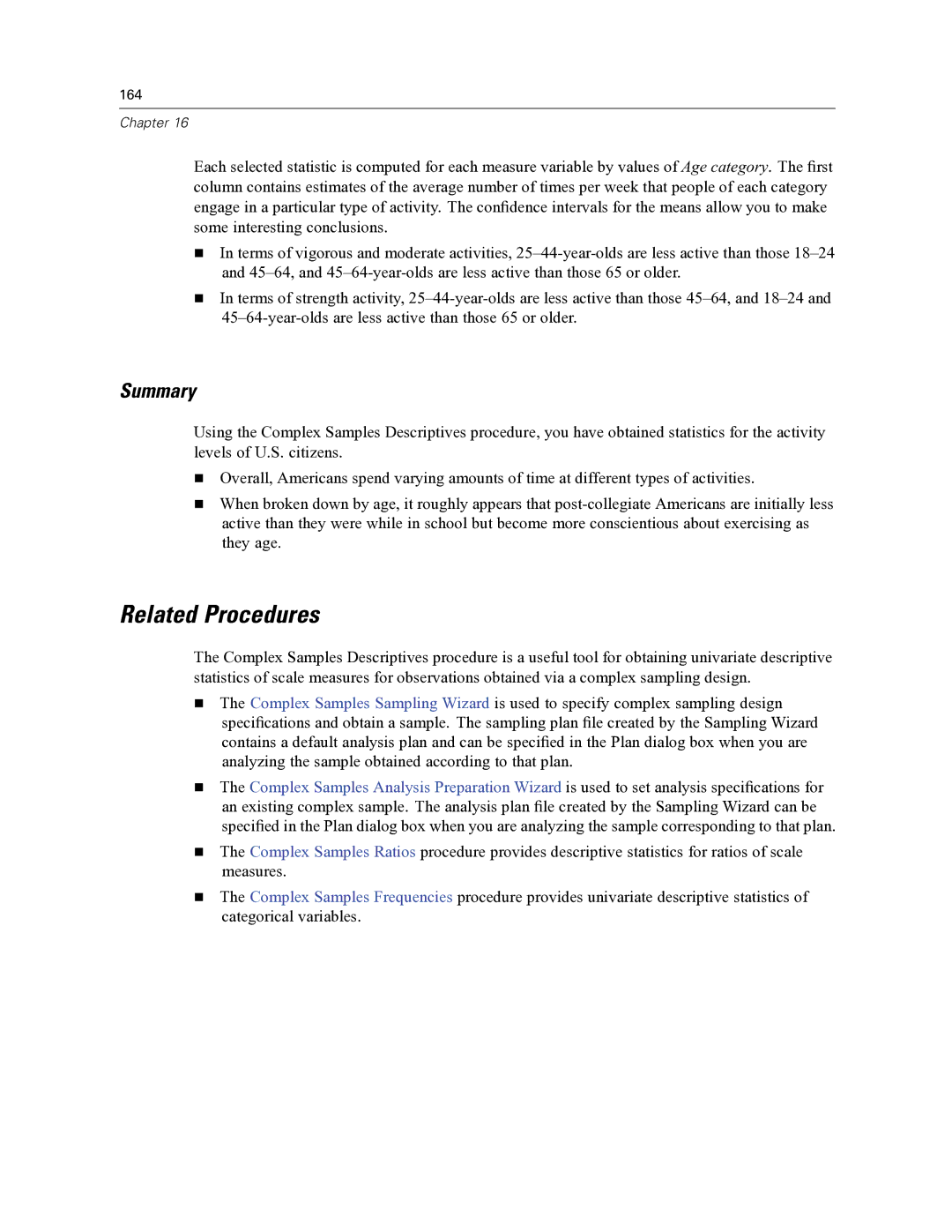164
Chapter 16
Each selected statistic is computed for each measure variable by values of Age category. The first column contains estimates of the average number of times per week that people of each category engage in a particular type of activity. The confidence intervals for the means allow you to make some interesting conclusions.
In terms of vigorous and moderate activities,
In terms of strength activity,
Summary
Using the Complex Samples Descriptives procedure, you have obtained statistics for the activity levels of U.S. citizens.
Overall, Americans spend varying amounts of time at different types of activities.
When broken down by age, it roughly appears that
Related Procedures
The Complex Samples Descriptives procedure is a useful tool for obtaining univariate descriptive statistics of scale measures for observations obtained via a complex sampling design.
The Complex Samples Sampling Wizard is used to specify complex sampling design specifications and obtain a sample. The sampling plan file created by the Sampling Wizard contains a default analysis plan and can be specified in the Plan dialog box when you are analyzing the sample obtained according to that plan.
The Complex Samples Analysis Preparation Wizard is used to set analysis specifications for an existing complex sample. The analysis plan file created by the Sampling Wizard can be specified in the Plan dialog box when you are analyzing the sample corresponding to that plan.
The Complex Samples Ratios procedure provides descriptive statistics for ratios of scale measures.
The Complex Samples Frequencies procedure provides univariate descriptive statistics of categorical variables.
